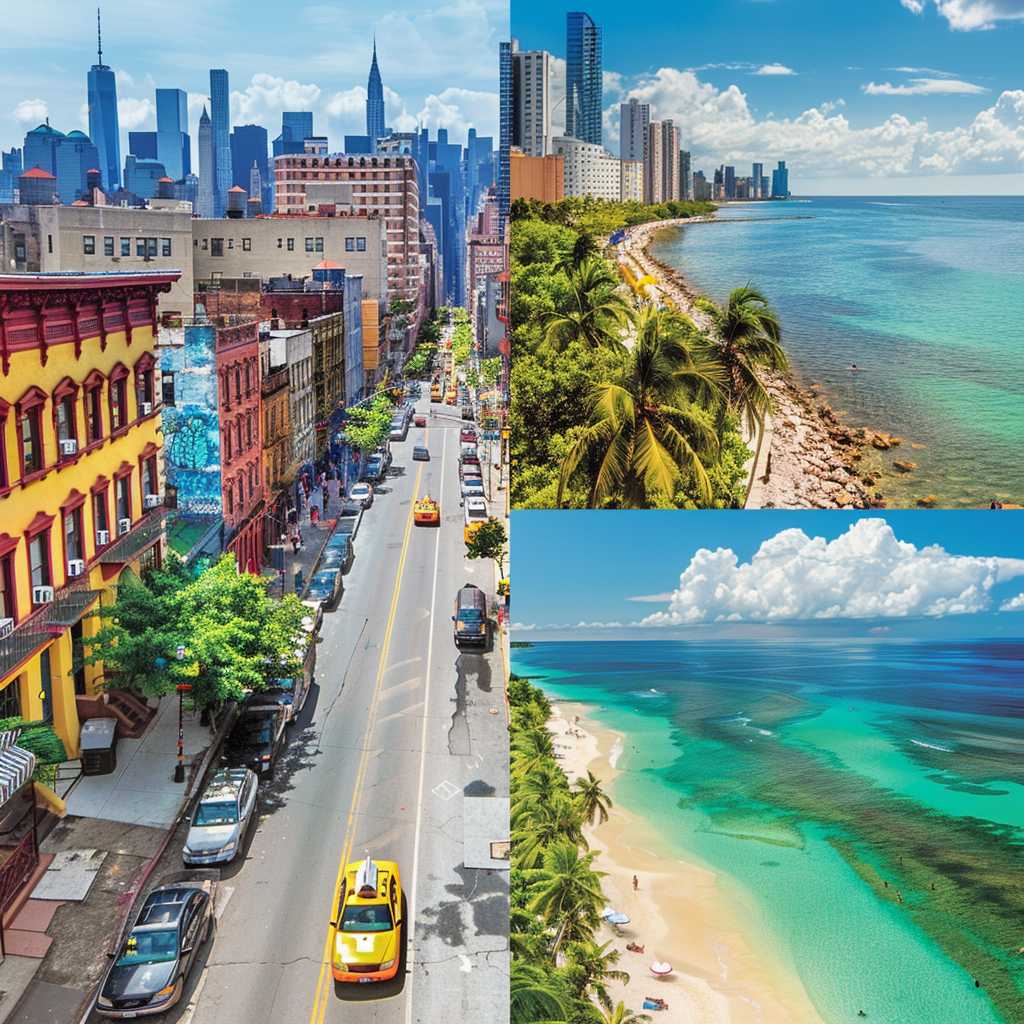The USA vs Jamaica: A Comparison of Two Distinct Nations
The United States and Jamaica are two countries that, while geographically not too far from one another, represent distinct political, economic, and cultural landscapes. With the USA sprawling across North America and the island nation of Jamaica nested in the Caribbean, there’s a tapestry of history, demographics, bilateral relations, and tourism that weave these nations together, yet also illustrate their uniqueness.
Geographical and Demographic Overview
The United States is the third-largest country in the world by land area and has a varied geography ranging from vast plains to striking mountain ranges and arid deserts. Its population exceeds 330 million people, making it one of the most populous countries globally. The demographic makeup is diverse, including individuals from virtually all ethnicities and cultural backgrounds.
In contrast, Jamaica is an island nation situated in the Caribbean Sea with a far smaller landmass. Home to nearly 3 million people, it has rugged mountain terrain, rainforests, and reef-lined beaches. The population is predominantly of African descent due to a history of slavery on the island, which also influences much of its cultural fabric.
Political Systems and Governance
The United States operates under a federal presidential constitutional republic. It boasts one of the longest-running democracies in the world, with power divided among executive, legislative, and judicial branches at both the federal and state levels. Presidents are elected every four years, while members of Congress are elected via a bicameral parliamentary structure.
Jamaica functions as a parliamentary democracy based on the Westminster model and is a constitutional monarchy recognizing Queen Elizabeth II as Head of State. Executive authority rests in the crown but is exercised by the Governor-General on behalf of the Queen. The Jamaican Prime Minister is usually the head of the party with the legislative majority, and Members of Parliament are elected in general elections within a multi-party system.
Economic Structures and Trades
The economy of the USA is considered to be one of the most robust globally, marked by diversity and noted for its advancements in technology, manufacturing, and service industries. It holds tremendous economic influence around the world and has a mixed-market economy where corporations and businesses operate relatively free from government interference but within boundaries established by law.
Jamaica’s economy is smaller with a strong dependence on services; its largest sector is tourism followed by mining of bauxite/alumina, agriculture (particularly sugarcane), and to a lesser extent manufacturing. While there have been efforts to diversify the economy, it continues to face challenges such as high debt-to-GDP ratios and susceptibility to external shocks.
Cultural Diversity and Influence
The cultural influence of both countries cannot be overstated — each exports its lifestyle through media, music, film, products, and even cuisines to all corners of the globe. American culture reflects its historical immigrant roots and contemporary diversity; it can be seen in every aspect from language use (with English being predominant peppered with Spanish influence) to popular culture phenomena like Hollywood films and jazz music.
On the other hand, Jamaican culture is renowned worldwide particularly for reggae music
Bilateral Relations
Relations between the United States and Jamaica have typically been friendly underpinned by trade, mutual agreements related to security, economic cooperation, and cultural exchange programmes. The two countries share interests in combating drug trafficking and strengthening regional security in the Caribbean. The USA also has strong ties with Jamaican expatriates who significantly contribute to both countries’ economies through remittances.
Tourism Interactions
Tourism serves as a nexus between the USA and Jamaica with Americans accounting for a significant portion of visitors to Jamaica each year. Conversely, many Jamaicans travel to America for work or leisure given visitor arrangements through visas or permanent routes involving employment or family reunification.
Environment and Sustainability Efforts
Both countries face unique environmental challenges and have been engaging in sustainability efforts. The USA contends with pollution control across large industrial zones and conservation issues across diverse ecosystems like wetlands or forests. Conversely, Jamaica’s environmental concerns tend toward coastal integrity due to weather events that can affect their tourism-centric spaces.
